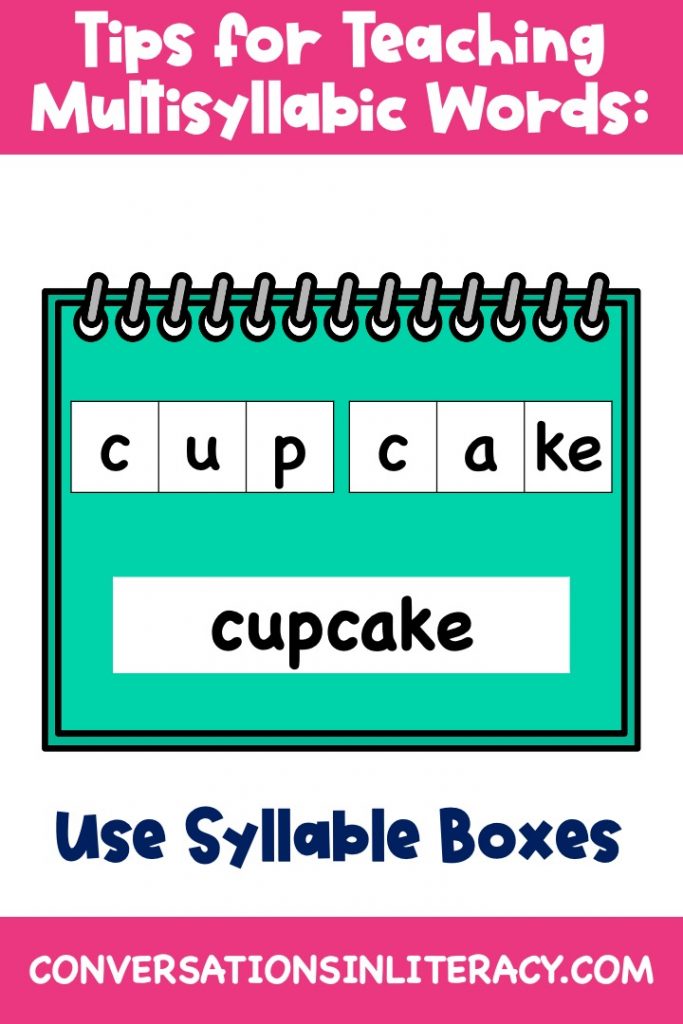
Teaching multisyllabic words can be tricky and trying to learn these multisyllabic words can lead to frustration for some of our students.

But there are steps we can take to make this process more manageable for our students. And we are going to begin at the beginning but is an extremely important step!

Our first tip for teaching multisyllabic words is to incorporate phonemic awareness! Some may think that phonemic awareness is only for our youngest students. But all students can and do benefit from this important skill builder!
If my students are going to be working on silent e multisyllabic words, I like to begin by going back to one syllable words to be sure we are fluent with those sounds. I could call out bake and students could push counters into sound boxes for each SOUND. We would do a few of these. Then I would leave these sound boxes out for support if students need it for the next part. I would say the word lake, switch the /a/ (I would make the long a sound) to /i/ and what word would it be? We would do a few of these phonemic awareness exercises, spending only about 2-3 minutes, before moving on to other skills.

Another exercise I have students do to strengthen phonics skills is daily reading of phonics charts. It is just one more way of building automaticity for vowel sound fluency. It seems to be vowel sounds that trip up readers the most if they are not solid in those skills.

You can also build vowel sound fluency with onset and rime triangles. It is the next step up from reading sound by sound by teaching students where to break words.

Moving vowel tiles and word pieces in digital activities is just another format that makes vowel sounds and word building fun!

This third tip for teaching multisyllabic words is one that will take time to build in your students. This is because it takes a bit of time and students sometimes like to rush this part when completing it independently.
Once students have a solid foundation in vowel sounds and patterns, they can take those sound boxes and apply them to multisyllabic words.
Say “cupcake” and students clap the syllables in this word. Then students use sound boxes to push in the sounds and write the letters for the first syllable. Repeat this for the second syllable. The last step is writing the entire word. Students need to have sound boxes at their desks to support the application of this skill when they are working on their own. Clapping out each syllable and then writing the sounds for each syllable makes a huge difference for students and their fluency if you teach them to do it independently!

Using word triangles during word work time is another great scaffold for multisyllabic words. The words are already broken into syllables for students and builds fluency. After introducing this activity during word work, place it into a literacy center. You can even use them in a digital literacy center!

Our word triangles range from 2 syllables to 5 syllable words. Each set also contains comprehension sentence task cards for application of the skills. You don’t want to only work on phonics in isolation. The whole reason is for students to apply skills to connected text and improve their comprehension!

Leave a Reply